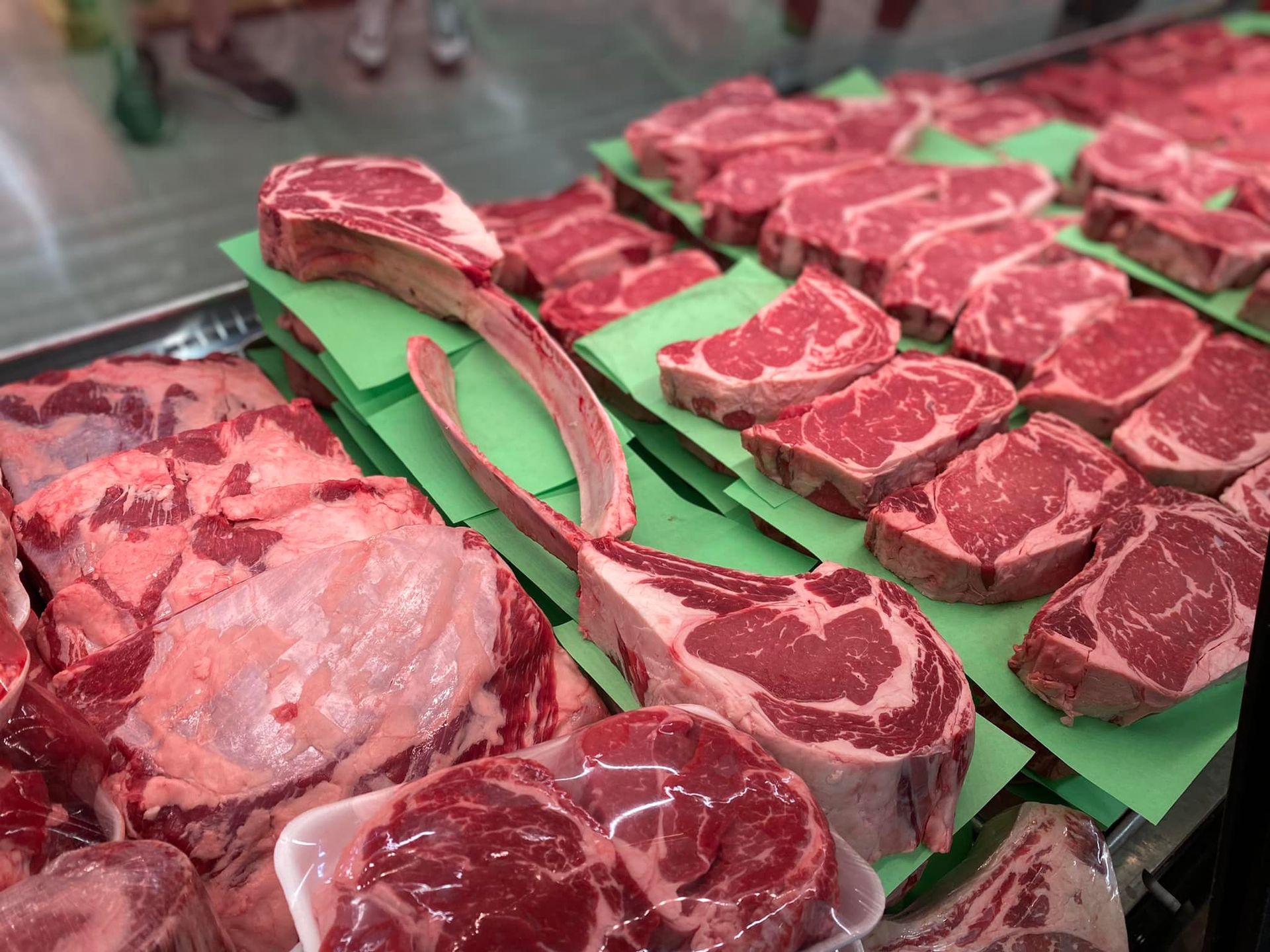Why Citizens Love Bagley Farms Meat Market Edwardsville IL for Their Meat Purchasing
Why Citizens Love Bagley Farms Meat Market Edwardsville IL for Their Meat Purchasing
Blog Article
Reveal the Art of the Butcher's Cut in a Modern Meat Market
In the ever-evolving landscape of modern-day meat markets, the butcher's cut has transcended its typical origins, combining olden workmanship with modern practices. What really sets the contemporary butcher apart is their capability to build a much deeper connection between consumers and the beginnings of their meat.
Advancement of Butchery Strategies
The development of butchery strategies reflects a rich tapestry of advancement and adaptation driven by improvements in innovation, modifications in consumer need, and a deeper understanding of meat science. Historically, butchery was a craft gave with generations, with approaches honed over centuries to make the most of return and flavor. The commercial revolution ushered in automation, changing conventional methods and allowing large processing.
The mid-20th century saw butchery methods even more fine-tuned by clinical insights right into muscle biology and meat aging, enhancing both inflammation and taste. Innovations like vacuum cleaner packaging and refrigeration prolonged item shelf-life, permitting butchers to expand offerings and enhance high quality control. This duration likewise marked the surge of specialized tools, such as band saws and meat slicers, which increased precision and effectiveness in meat handling.

Computerized systems currently assist in monitoring pet provenance and maximizing cuts to meet certain consumer preferences. Additionally, a rebirth in artisanal butchery has emerged, mixing conventional abilities with contemporary understanding to cater to consumers seeking ethical and sustainable meat alternatives.
Comprehending Meat Cuts
Recognizing the intricacies of meat cuts is important for both butchers and customers seeking quality and worth. For butchers, specific cuts mirror skill and respect for the craft, making certain very little waste and optimum yield.

Recognizing muscle make-up is vital; muscles used more regularly by the animal have a tendency to be tougher and are best fit for slow food preparation approaches, while less-used muscle mass, like those found in the loin, are much more tender and suitable for barbecuing or roasting. Experience with these distinctions encourages customers to make enlightened choices, boosting their culinary undertakings.
Selecting Quality Meat
Picking the best meat includes even more than just picking a visually attractive item from the display. The art of picking high quality meat requires a discerning eye and understanding of specific features that indicate quality and excellence.
Secondly, take into consideration the marbling, which describes the white streaks of fat within the muscle mass. Proper marbling is a key a fantastic read sign of inflammation and taste, as it thaws throughout food preparation, boosting the meat's juiciness. Remember, higher marbling often correlates with premium top quality cuts, such as USDA Prime.
Appearance is another critical aspect; meat needs to feel strong to the touch, not slimed or extremely soft. Additionally, be conscious of the scent. Fresh meat must have a tidy, neutral smell, devoid of any sour or repulsive odors.
Coupling Cuts With Cooking Methods

On the other hand, tougher cuts like brisket and chuck roast are rich in collagen, which damages down into gelatin when prepared gradually. These cuts are excellent for braising or slow roasting, permitting the meat to tenderize in time and create deep, intricate tastes. Cuts such as brief ribs and pork shoulder make out well with slow-cooking methods, where expanded cooking times change their durable textures into delicious recipes.
Lamb shanks and oxtail, which call for long term cooking to tenderize, are best prospects for stewing or slow simmering. These techniques coax out abundant, hearty tastes while maintaining dampness. By understanding the distinct characteristics of each cut, cooks and home chefs alike can raise their culinary productions, making certain each dish is both pleasing and memorable.
The Butcher's Duty Today
Browsing the progressing landscape of the contemporary meat market, the butcher's role today extends beyond mere preparation of cuts. Contemporary butchers are culinary artisans, educators, and supporters for sustainable practices. They link the space between the ranch and the fork by ensuring ethical sourcing, recognizing pet husbandry, and focusing on openness in the supply chain. This change reflects the growing consumer demand for quality over amount, where provenance and animal well-being are extremely important.
In addition to crafting specific cuts, butchers now engage straight with clients, using cooking advice and tailoring selections to suit individual needs and choices. Their competence in meat aging, marbling, and taste accounts equips customers to make informed choices, improving their culinary experiences. This individualized solution exemplifies the butcher's progressing function as a trusted consultant in the kitchen area.
Furthermore, butchers are pivotal in minimizing waste, using entire animals to create diverse items such as sausages and stocks. This thorough approach not just respects the animal yet check this likewise straightens with modern sustainability objectives. This way, the contemporary butcher embodies both practice and development, adjusting to an ever-changing market while preserving the artistry and stability of their craft.
Verdict
The contemporary butcher's craft intricately weaves traditional strategies with modern-day developments, highlighting lasting techniques and moral sourcing. Mastery in understanding varied meat cuts and high quality signs equips butchers to provide enlightened recommendations, aligning particular cuts with ideal cooking methods. This competence not just raises culinary experiences but also strengthens the link in between consumers and the origins of their food. By recognizing historical practices while embracing modern needs, the butcher's function remains vital in today's innovative meat market (bagley farms meat market edwardsville il).
Report this page